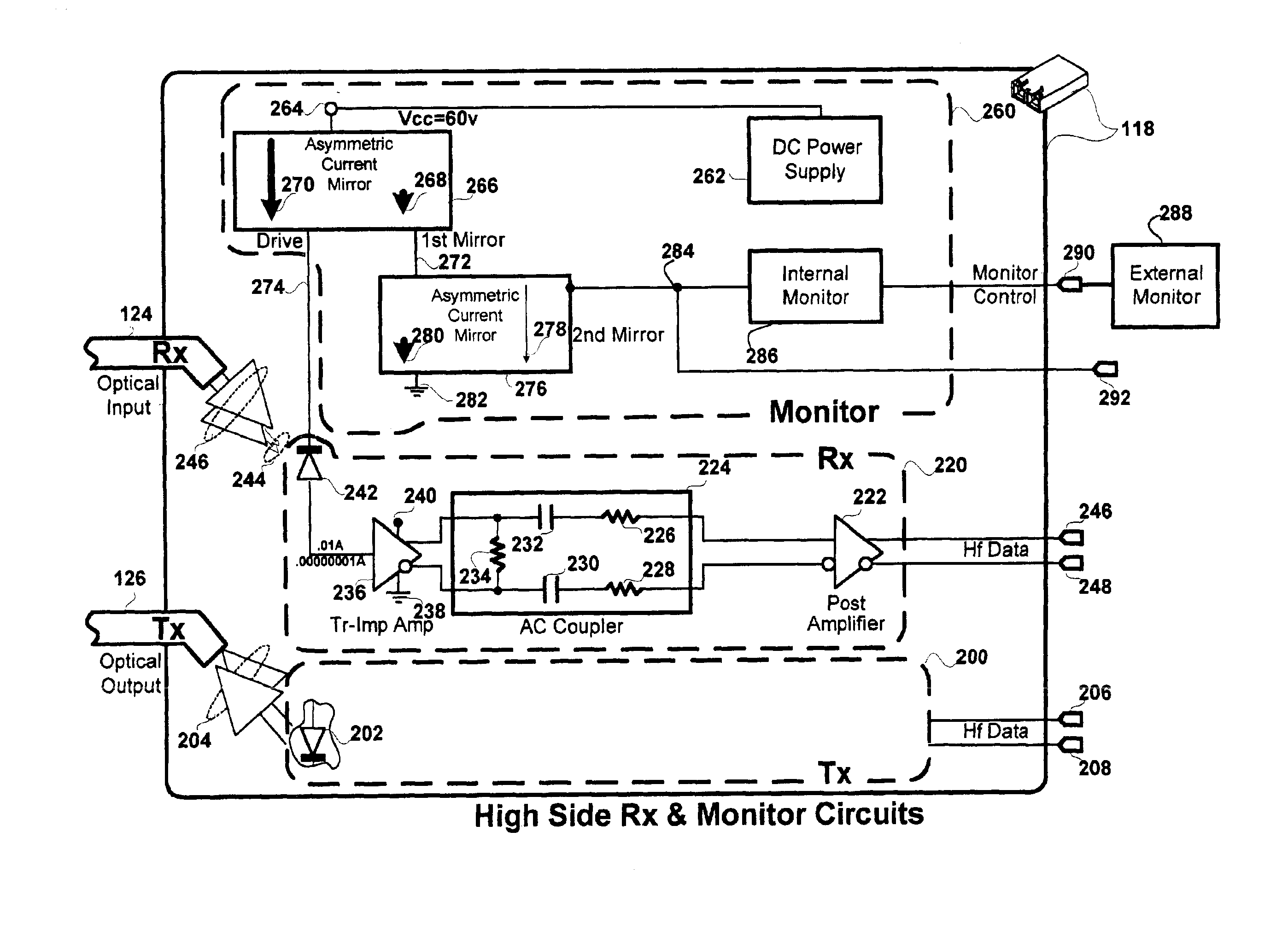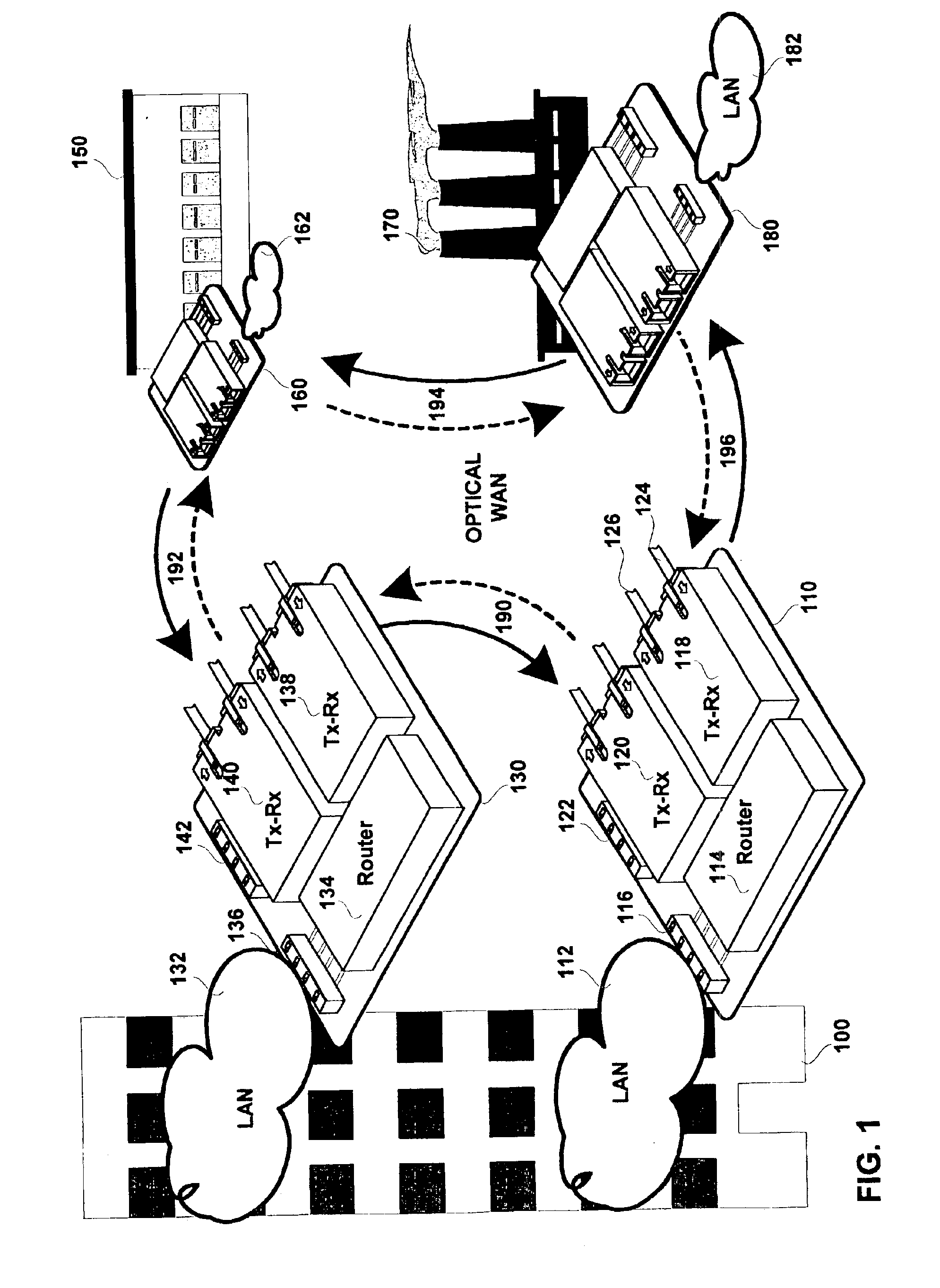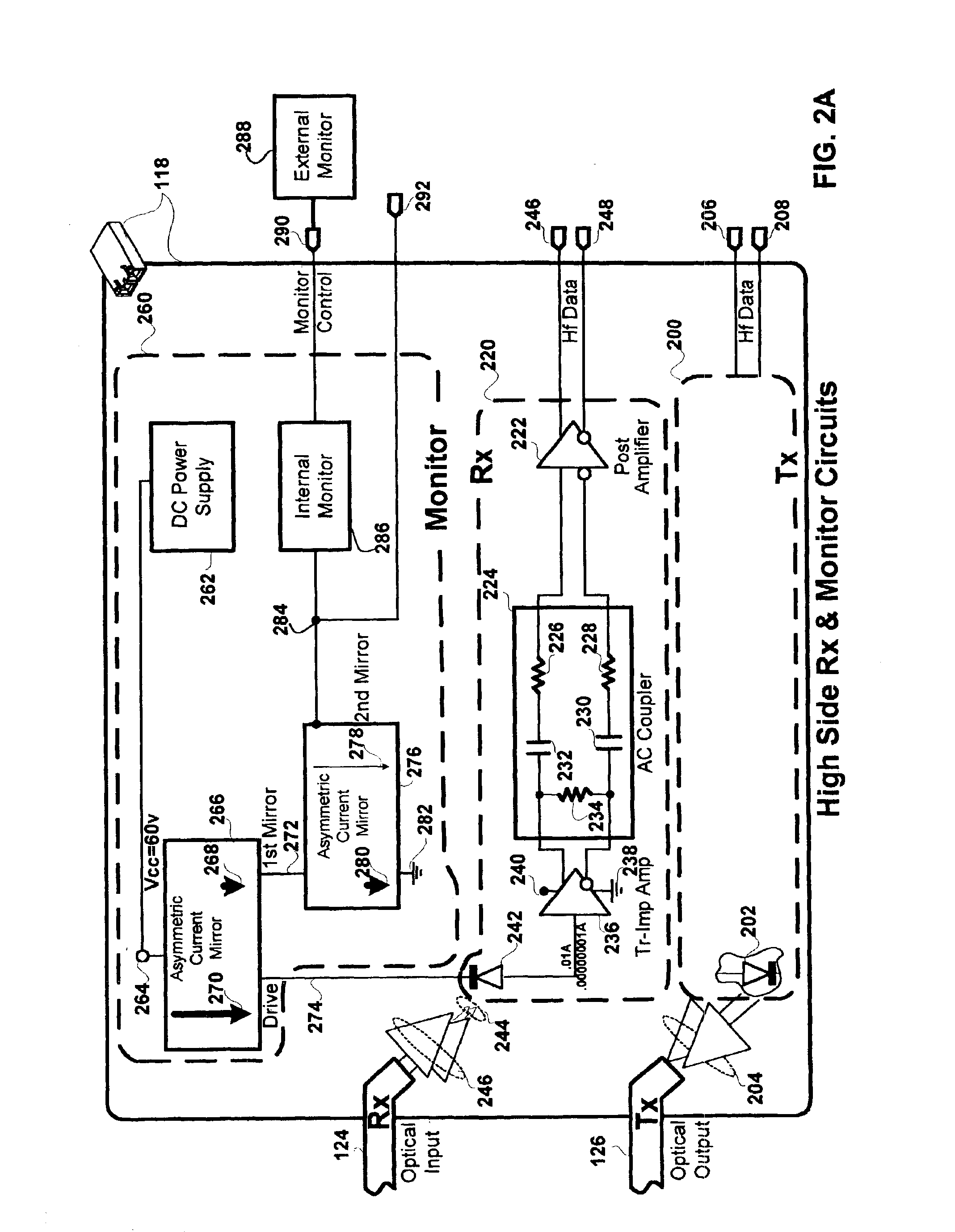Method and apparatus for monitoring a photo-detector
a technology of photodetector and monitoring circuit, applied in the field of optical receivers, can solve the problems of extremely low power requirements of monitoring circuits above and beyond, and achieve the effect of low power requirements
- Summary
- Abstract
- Description
- Claims
- Application Information
AI Technical Summary
Benefits of technology
Problems solved by technology
Method used
Image
Examples
Embodiment Construction
[0021]A method and apparatus is disclosed for monitoring an optical signal detector. The optical signal detector may be part of an optical receiver, transceiver or transducer. The monitoring of the photo-detector may be used to determine the strength of a received optical signal during setup or normal operation of an optical communication system. During normal operation received signal strength can be used to determine component aging. The monitor generates a mirror current which is highly compliant with the photo-detector current across a broad current range. The linearity of the monitor circuit makes it particularly suited for optical networks such as telecommunication networks with a broad range of lengths between network transceiver nodes. The monitoring circuit also exhibits extremely low power requirements above and beyond those required to power the optical signal detector.
[0022]FIG. 1 shows a plurality of optical transceivers coupled to one another to form a wide area optica...
PUM
 Login to View More
Login to View More Abstract
Description
Claims
Application Information
 Login to View More
Login to View More - R&D
- Intellectual Property
- Life Sciences
- Materials
- Tech Scout
- Unparalleled Data Quality
- Higher Quality Content
- 60% Fewer Hallucinations
Browse by: Latest US Patents, China's latest patents, Technical Efficacy Thesaurus, Application Domain, Technology Topic, Popular Technical Reports.
© 2025 PatSnap. All rights reserved.Legal|Privacy policy|Modern Slavery Act Transparency Statement|Sitemap|About US| Contact US: help@patsnap.com



